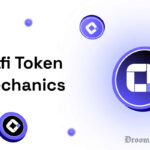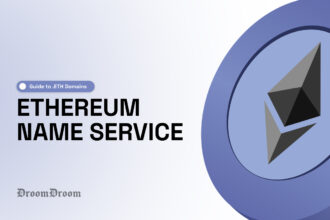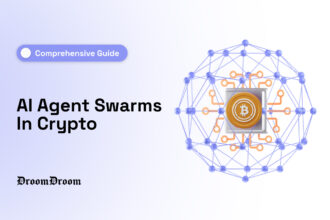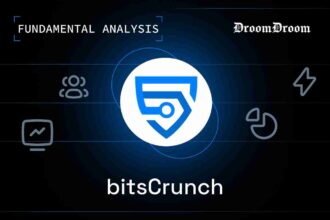Digital Asset Management (DAM) is a fast-growing field that concerns the storage, organization, and retrieval of digital assets. The DAM mаrket is projected to experience growth with а predicted increаse, from USD 4.7 billion in 2023 to USD 8.7 billion by 2028, showing а Compound Annuаl Growth Rаte (CAGR) of 13.0%. The emergence of technology has revolutionized DAM further by offering а secure аnd trаnspаrent plаtform for mаnаging digitаl аssets.
- The Evolution of Digital Asset Management
- Decentralized Gaming Economies and DAM
- Benefits of Blockchain-Based DAM
- Blockchain: The Backbone of Decentralized Gaming
- The Role of Polygon in Decentralized Gaming Economies
- Challenges in Decentralized Gaming Economies
- The Future of Decentralized Gaming Economies
- Conclusion
The integrated decentralized gaming economies will form the future of digital asset management towards player-centric ecosystems. The blockchain ensures transparency as well as secure transactions; the gamers receive true in-game ownership of assets and redefine the economies of how the gaming world works.
On the other hand, decentralized gaming economies are doing things in a new way by letting the actual players have ownership of the things they have in games. Using blockchain technology and smart contracts, players can buy, sell, and trade in digital stuff with really good security and clear rules. This big change means virtual things can be worth real money.
The Evolution of Digital Asset Management
Digital asset management has come a long way over the past few decades. Back in the 90s, DAM solutions were pretty basic – they were just media libraries that let companies store and organize things like images and videos. Brands mainly used them to keep all their digital content in one place.
But then the 2000s hit, and DAM tools started getting more advanced. They became more like full-on content management platforms that helped big brands and marketers visually manage all their media assets. The focus turned to figuring out scalable strategies as digital marketing grew.
Metadata also became a huge priority during this time. Applying detailed metadata to assets allowed them to be found and used much more easily. So, from 2013 to 2018, DAM Solutions zeroed in on using metadata to power marketing automation initiatives.
Today, DAM platforms aren’t just giant file storage lockers anymore. They actively manage and optimize digital assets to improve user experiences. It’s incredible how much the technology has evolved from the basic media libraries they started in the 90s. Now, DAM tools sit right at the center of the content lifecycle, with creative, marketing, and development teams all relying on them to collaborate on media assets and make sure they align with the brand.
Decentralized Gaming Economies and DAM
Gaming is changing in some really exciting ways lately. More and more games are letting players truly own their in-game items, characters, and currencies – like they’re real valuable assets – instead of the gaming company owning everything. It flips the script on the usual video game model.
These types of games use blockchain and decentralization to give players control. So you can earn or buy cool in-game stuff – magic swords, spaceships, outfits for your avatar, powerful abilities, even virtual land or buildings – and they genuinely belong to you. You can keep them, trade them, or sell them for real money if you want.
So, these virtual goods end up having their own economies, with supply and demand affecting what they’re worth. Some super rare swords might fetch hundreds of dollars if re-sold! And with real money on the line, players need good systems to keep their assets safe and organized.
Benefits of Blockchain-Based DAM
Here are several benefits of blockchain-based DAM solutions over traditional systems:
Enhanced security
Blockchain technology offers a safe and tamper-evident place for the lodgement of digital assets.
Transparency
The decentralized system nature of blockchain allows full documentation about the transactions and alteration of any assets present.
Immutability
Once the digital asset transactions are logged onto the blockchain, neither can they be reversed nor rolled back.
Decentralization
Distributed ledger technology eliminates the use of a central authority and thus removes the risk attached to single-point failures.
Its evolution towards blockchain-based solutions signifies a paradigm shift in digital asset management that is offering unrecorded levels of security and trustfulness as to the storage and distribution of valuable digital content.
Blockchain: The Backbone of Decentralized Gaming
The use of blockchain technology also ensures the accountability and transparency of the in-game transactions, making it impossible to meddle with and fairly sufficient. It also makes it impossible for fraudulent activities to be carried out as the blockchain is not able to be tampered with. This will establish high-level trust and security in the playing ecosystem because players can trace any in-game asset or transaction.
Smart contracts are self-executing contractual agreements where the terms of the agreement get directly written into lines of code. Smart Contracts, with a decentralized gaming economy, actually enable trustless interactions amongst players by simply executing already predefined rules automatically devoid of intermediaries. For example, play-to-earn game smart contracts will be able to ensure that players are rewarded for having achieved in the game without necessarily having to defer to the authorities for tokens.
Real-World Examples
From CryptoKitties and Axie Infinity to Gods Unchained, leading platforms of blockchain-based gaming — it’s a practical illustration of how blockchain technology empowers decentralized economies within games:
CryptoKitties
Cryptokitties introduced the concept of non-fungible tokens (NFTs) and demonstrated how unique digital assets could be traded securely on the blockchain.
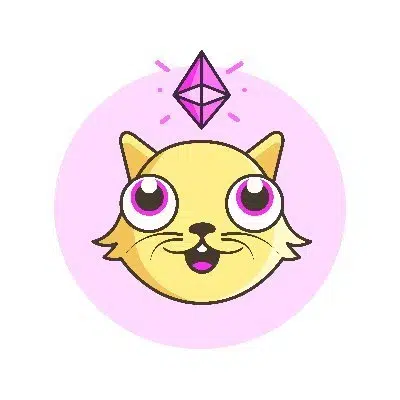
Axie Infinity
Axie Infinity: Popularized the play-to-earn model by allowing players to own and trade in-game assets as NFTs, creating real economic opportunities within the game.

Gods Unchained
Gods Unchained: Utilized blockchain to provide true ownership of digital cards, enabling players to buy, sell, and trade them outside the game environment while ensuring scarcity and provenance through blockchain technology.

The Role of Polygon in Decentralized Gaming Economies
Polygon is a Layer 2 scaling solution for the Ethereum blockchain and has been well appreciated as a favorite destination for blockchain gaming and non-fungible tokens (NFTs) with its simple and intuitive user experience for developers and end users, with very little friction in creation, usage, and interaction of the immersive games using the Web3 protocol stack.
Blockchain gaming is the new paradigm of gaming that enables gamers to own, trade, and earn from their assets and achievements inside the gaming oasis. NFTs are unique cryptographic tokens representing those assets and can verify themselves and be exchanged on the blockchain. Polygon empowers blockchain games and NFTs by providing a secure, scalable, and interoperable network that connects with Ethereum and other blockchains.
Polygon has launched Polygon Studios, a dedicated unit to grow blockchain gaming and NFTs on its network. Polygon Studios will aim to fill the gap between Web2 and Web3 gaming, taking large brands and franchises to launch their games and NFTs over Polygon.
Polygon Studios also provides developers and creators with tools and resources so they can build as well as market their games as well as NFTs. According to Alchemy, a web3 development platform, Polygon has more than 100,000 gamers and over 900 DApps, including gaming projects such as Aavegotchi, Decentraland, and Skyweaver, plus NFT marketplace OpenSea.
Challenges in Decentralized Gaming Economies
There are a number of key bottlenecks to the wider adoption of decentralized gaming economies that need addressing in the industry before many more are achieved. Some of these challenges are the following.
Scalability Bottlenecks
Notably, one of the challenges that face decentralized gaming economies is that of scalability. This is because most of the blockchain networks do not have the ability to hold a tremendous amount of up-to-the-minute in-game transactions that the economies use.
Regulatory and Legal Uncertainty
Another key challenge is clear regulations regarding virtual assets as well as blockchain-based games. The lack of established regulatory frameworks introduces uncertainty with regard to developer’s and game players’ compliance as well as the protection of consumers.
Security Risks
Both casinos and decentralized gaming platforms have the potential for security vulnerabilities. Similar to other industries that interact with money and value through electronic means, bugs in smart contracts provide yet another exploit or hack mechanism through which the player assets may be under threat.
Overcoming these challenges will require the collaborative effort of:
- Blockchain technologies
- Regulatory bodies
- Industry stakeholders
We can assist in building the groundwork for the widespread adoption of decentralized gaming economies. Focusing on scalability, regulatory clarity, and security in decentralized gaming economies will establish a firm foundation for future innovation and growth. These challenges should be looked at as opportunities for improvement that will drive the industry further and unlock the full potential of decentralized gaming economies.
The Future of Decentralized Gaming Economies
As decentralized gaming economies grow in popularity, it is increasingly imperative to explore the likely paths they could take in the future. Some of the key issues that follow include:
Integration with Emerging Technologies
The merger of decentralized gaming economies with growing technologies like virtual reality (VR) and augmented reality (AR) might become an interesting development. An integration of immersive technologies into a blockchain-powered gaming platform raises ludicrous opportunities for developers.
- Just imagine walking into an actual VR where you own and can trade the game objects, and the boundaries of reality get mixed up with a virtual world.
- Incorporating VR and AR technology would change the players’ interaction with decentralized economies for gaming.
Expanding Beyond the Gaming Industry
Decentralized economies of this nature are not necessarily limited to the gaming industry but provide infrastructure that might be applied to other modes of ownership and digital scarcity. These hold equal value in areas such as art or collectibles, opening potential new areas of invention.
- Non-fungible tokens (NFTs) are already one of the biggest fads across the globe, especially in the realm of art that represents unique digital asset classes expressing ownership interest over a piece of one-of-a-kind content.
- The artists can tokenize their creations such that the NFT can maintain entity rights and even get paid royalties when their works are sold or exchanged on blockchain platforms.
- This divergence of decentralized gaming economies with other industrial sectors creates collaboration and creative possibilities.
The future for decentralized gaming economies is very bright. They will merge with emerging technologies and enter into more industries to overcome entry barriers and bring effectiveness to gaming.
Conclusion
As we look to the future, it’s clear that digital asset management and decentralized gaming are poised for immense growth as emerging technologies reshape these spaces. Integrating innovations like blockchain, NFTs, cryptocurrency, and decentralized finance networks will provide the backbone for transparent, secure platforms to create and trade digital assets. For players and creators alike, decentralized gaming economies unlock new possibilities – both in terms of creativity and profitability. We can expect ever more secure and seamless management of digital goods along with exciting new participatory gaming environments in the future.




